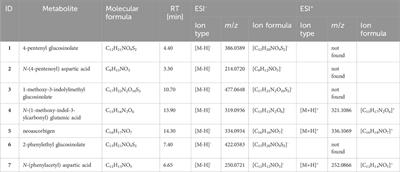Gregarines impact consumption and development but not glucosinolate metabolism in the mustard leaf beetle

Gregarines are usually classified as parasites, but recent studies suggest that they should be viewed on a parasitism-mutualism spectrum and may even be seen as part of the gut microbiota of host insects. As such, they may also impact the consumption of their hosts and/or be involved in the digestion or detoxification of the host’s diet. To study such effects of a gregarine species on those traits in its host, the mustard leaf beetle (Phaedon cochleariae) was used. This beetle species feeds on Brassicaceae plants that contain glucosinolates, which form toxic compounds when hydrolyzed by myrosinases. We cleaned host eggs from gametocysts and spores and reinfected half of the larvae with gregarines, to obtain gregarine-free (G-) and gregarine-infected (G+) larvae. Growth and food consumption parameters of these larvae were assessed by rearing individuals on watercress (Nasturtium officinale, Brassicaceae). A potential involvement of gregarines in the glucosinolate metabolism of P. cochleariae larvae was investigated by offering G- and G+ larvae leaf discs of watercress (containing mainly the benzenic 2-phenylethyl glucosinolate and myrosinases) or pea (Pisum sativum, Fabaceae, lacking glucosinolates and myrosinases) treated with the aliphatic 4-pentenyl glucosinolate or the indole 1-methoxy-3-indolylmethyl glucosinolate. Larval and fecal samples were analyzed via UHPLC-QTOF-MS/MS to search for breakdown metabolites. Larval development, body mass, growth rate and efficiency to convert food into body mass were negatively affected by gregarine infection while the pupal mass remained unaffected.
The breakdown metabolites of benzenic and aliphatic glucosinolates were conjugated with aspartic acid, while those of the indole glucosinolate were conjugated with glutamic acid. Gregarine infection did not alter the larvae’s ability to metabolize glucosinolates and was independent of plant myrosinases. In summary, some negative effects of gregarines on host performance could be shown, indicating parasitism. Future studies may further disentangle this gregarine-host relationship and investigate the microbiome potentially involved in the glucosinolate metabolism.
Read the full article at the original website
References:
